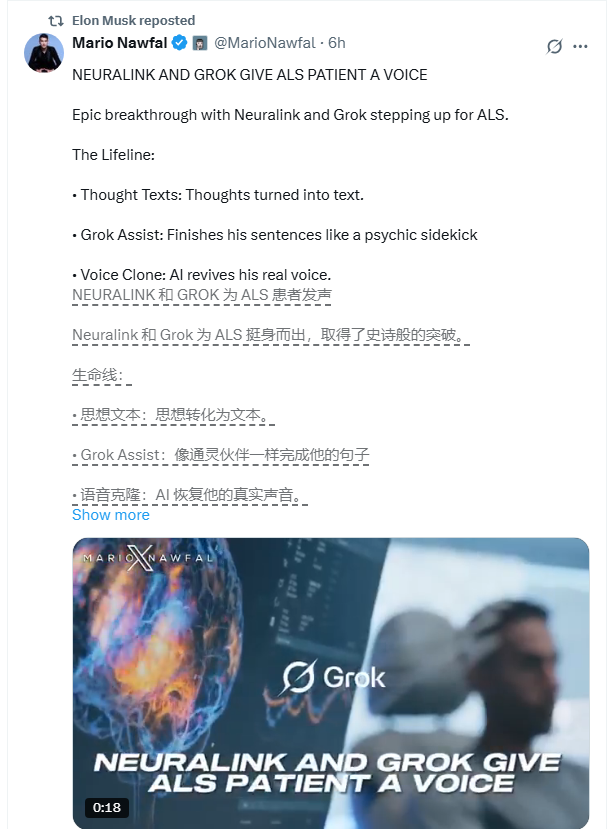Musk Unveils Neuralink-Grok Tech to Restore Speech for ALS Patients
In a significant breakthrough for assistive technology, Elon Musk has demonstrated how Neuralink's brain-computer interface combined with his AI chatbot Grok can help ALS patients regain their ability to communicate. The system was showcased through a case study featuring Bradford Smith, a patient who lost both mobility and speech due to amyotrophic lateral sclerosis (ALS).
How the Technology Works
The innovative system operates through three integrated components:
- Mind-to-text conversion: Neuralink's implanted chip translates the patient's neural signals into digital text
- AI sentence completion: Grok intelligently predicts and completes thoughts in real-time
- Voice cloning: The system reconstructs the patient's original voice for natural-sounding speech

Bradford Smith's case demonstrates the technology's potential. Despite being unable to move or speak, he can now form complete sentences simply by thinking them. The AI doesn't just transcribe thoughts—it understands context to help formulate coherent expressions, while voice cloning preserves the patient's unique vocal identity.
Regulatory Progress and Future Applications
The U.S. FDA recently granted Neuralink's Link device "Breakthrough Device" designation specifically for communication assistance in severe language disorders. This regulatory milestone accelerates the path toward broader clinical applications.
Medical experts suggest this technology could transform treatment for various neurological conditions beyond ALS, including Parkinson's disease and cerebral palsy. The integration of brain-computer interfaces with generative AI represents a paradigm shift in human-computer interaction—moving us closer to direct thought-based communication.
What does this mean for the future of assistive technologies? As these systems evolve, they could fundamentally change how we approach disability accommodations and neurotechnology applications. The collaboration between Musk's companies highlights how converging technologies can create solutions greater than the sum of their parts.
Key Points
- Neuralink and Grok have developed a system allowing ALS patients to communicate via thought-controlled AI
- The technology combines brain-computer interfaces, AI sentence prediction, and voice cloning
- FDA has designated Neuralink's device as a "Breakthrough" for severe language disorders
- Potential applications extend to Parkinson's, cerebral palsy, and other neurological conditions
- Represents a major step toward direct thought-based human-computer interaction